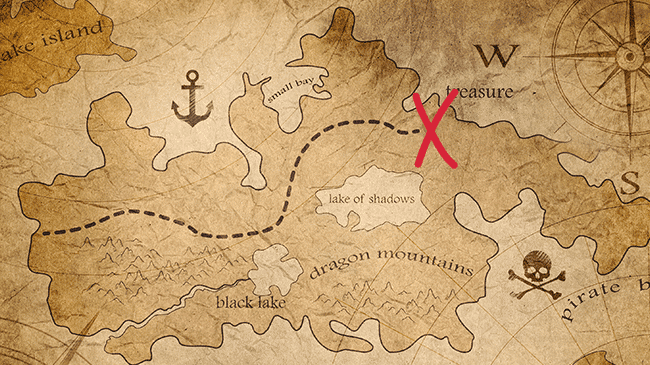The Client Education Process
Education is a necessary part of the sales process, no matter what you’re selling. At NeONBRAND, development projects are the most obvious example, so this post takes that perspective. The concepts apply to every kind of service work, though.
Clients hire software developers because they know what they want to achieve, but not how to build it. They don’t want to know how to build it, either. That’s why they’re hiring a developer.
You, the developer, know how to go from an idea to a finished product. You can’t do that unless you know what the client wants, of course, so you’ve also got some education ahead. Learning on both sides gets you and your client to a place where you can cooperate to accomplish the same goal.
Education is just as much a part of your job as building the product.

You may have a salesperson or relationship manager to handle client communication. In that case, your salesperson and developer will share education responsibilities in whatever way makes sense. The developer might have lots of contact with the client, or your relationship manager might be the go-between.
Good Things Happen When You Educate Clients Well
While a client doesn’t want or need to know how you do your job, they should at least know what you do.
Do a good job explaining what you do without drowning them in details, and you’ll find that your client can also do a better job articulating what they want from you. Often, just letting them know your capabilities inspires your client to ask for features they want, but dismissed as impractical.
A strong foundation of shared knowledge is also a foundation of trust. The lines of communication are open, you both know where you’re headed, and you both have enough information that you can work together. That’s a good place to be.

Client Communication: Rules to Work By
Rule 1:
Don’t use jargon or acronyms to describe what you do, no matter how common you think they are.
If you use words that your client doesn’t understand, they’re not going to ask you to define them. They’re going to assume you don’t know what you’re doing because you can’t explain yourself clearly.
Keep in mind that you probably don’t have to get deep into the details of your job, so technical terms aren’t very important to your client. Focus on clarity and simplicity, not detailed accuracy. You’re not training them as your apprentice, just giving them an overview.
Rule 2:
Keep it short and simple. Focus on what they want to know.
Your client wants to know how much it will cost, how long it will take, and what they’re going to get. Give them that information first, and then give them any background information they need to understand the price, timeline, and results.
Anything beyond that is going to hurt communication, not help. They’ll feel overloaded and confused, so the important stuff gets lost. Get to the point and stay there.

Rule 3:
Education doesn’t stop after the first meeting.
Throughout the entire build, stay in close contact and give lots of updates about your progress. In order to give good updates, you’ll also need to give some background information in a lot of cases.
It’s easy to let your communication get more complicated as time passes. Pay attention to that and keep it clear.
Rule 4:
Pretend you’re at career day.
Imagine yourself explaining your job to a room full of tweens and parents at your kid’s career day. You can’t take a long time, and it’s a tough audience, so you want to share the most interesting and useful points without going into a bunch of boring detail.
That’s exactly how you should explain your role to your clients.
Stay on topic, keep it short, and only cover the high points of what you do. You’ll get more information across by saying less.

The First Step in Client Education: Educate Yourself
Though it might seem counterintuitive, one of the most important parts of educating your clients is getting yourself up to speed.
You need to know a lot more than the specs of the things they want to build. Ask questions like:
- What are your most important business goals?
- How does your business make money?
- What are you doing now that’s working well, and what are you trying to improve?
- Why did you decide to take on this project?
- What do you want this build to accomplish for your business?
Knowing why they’re hiring you and what they want to get out of this project is a really, really big deal. They’re paying you to build some sort of solution for them, and since they’re not an expert like you are, they won’t know if what you’re building isn’t the best option. Ask enough questions so that you’re both confident in the results you can provide.
Next…You Get Even More Educated
Every good project involves plenty of research.
You’ll be researching your client’s industry, the specifics of their project, similar solutions that have at least some of the functionalities your client wants, and anything else that might help you avoid expensive unknowns during the build.

Of course, there are always some unknown elements. You can’t foresee everything that’s going to come up while you work. Effective research allows you to make a far more educated guess, though.
Drawing from your research and your insight about your client’s business goals, lay out your plan for completion.
The Scope Meeting
This is where client education makes the most difference. Setting the right expectations and taking enough time to explain the process now can eliminate a lot of confusion and unhappiness later.
Scope meetings happen after you’ve planned your work, but before you start development. The goal is to make sure that all parties are as clear as possible about the goal of this project and the individual responsibilities of everyone involved.
Your job right now is to:
- Articulate what the end product includes (and probably what it specifically does not include)
- Explain your development plan in focused detail
- Help your client understand that plan
- Forge an agreement as to what you are providing and what the client must do on their end to get there

At this stage, it’s okay to go into some of the details of your job. Just continue avoiding slang, jargon, and acronyms, because clarity is vital.
We as developers sometimes forget that even our small $5,000 projects are a huge investment to most of the clients with whom we work. Sure, that might be an entry-level price to us, but to the business owner who had to scramble to get that together, it’s a lot of money. Respect their investments and try not to treat your ‘small’ projects like small people.
With Work Underway, Stay in Touch
Now that you’re building, keep communicating, too! The importance of communicating during the build phase can’t be understated – you should be sending them so many emails and calling them so often you’re worried that you’re going to annoy them. It’s very, very rare that a client will ever be upset that you’re contacting them too much.
Send updates every time you work on the account, even if it’s work they won’t understand. It’s okay if you just say things like “we’re working on back end stuff, and it’s going well. We’re on schedule.” They don’t actually care what you’re doing as long as you’re doing something.
If you’re starting to drift off schedule, be honest about that, too.
Giving your client constant feedback makes it far easier to deal with timing challenges.
Think of it from their perspective: if you paid for someone to build you a house, and you get messages every day letting you know what kind of work is happening, wouldn’t you be more understanding if the foreman calls one day to let you know about a delay?
On the other hand, imagine you have someone building your house, and in several months, they haven’t contacted you once. You don’t know what’s been going on, and now that you want to check in, you find out the project is running behind schedule. Would you be so understanding then? Probably not.

You don’t want your clients sitting around wondering why you haven’t called.
By sending lots of updates, you’re showing your client that you’re on top of things. If and when something goes a little sideways, they’ll be more likely to cooperate with you to solve problems instead of getting angry.
Managing Scope Creep

Scope creep happens when your client asks for minor changes here and there, and you have great ideas about small features you can add or upgrade, and eventually all those little changes add up so that your finished project is a lot more complicated and time consuming than originally intended.
Your client doesn’t want the price to creep up during development.
You don’t want to invest a lot more hours and resources into a project without getting paid.
All the education you’ve already done (and are probably still doing) helps manage scope creep when it comes up…and it will come up. Every project has at least a little scope creep.
Explain scope creep to your client so they understand that little changes can result in the price creeping higher throughout the project. Let them know that it’s okay to make changes, and in order to make sure scope creep is controlled, you’ll use the same procedure for every change of any size.
For each change, go back to your original scope document, make the change, and have each party involved sign and date. If the price needs to adjust, this is where you adjust it and agree to the change. If the timeline needs to be moved a little, move it.
It’s a cumbersome process, which is part of the reason it works. You and your client will both prioritize those little changes much more carefully, and if you both agree that a change is needed, there will be no surprises at the end.
Done Building? You’re Not Done Educating
Delivering a finished product to your client isn’t the end of your relationship.
A good followup procedure makes it more likely that your client will use your solution successfully, which also means they’re more likely to refer new business your way. Teach them how to correctly use the product you built rather than leaving them to figure it out on their own, and stay available for a reasonable amount of time for support.
Some developers and agencies include a specific support period with each build. Others sell extended support as an additional service.
Check in with your clients after they’ve been using your solution for awhile to make sure it’s working for them. Little details like a friendly followup put you at the top of the list next time they need something built.
Client work always involves education, and the better you teach, the better your service business will do.

